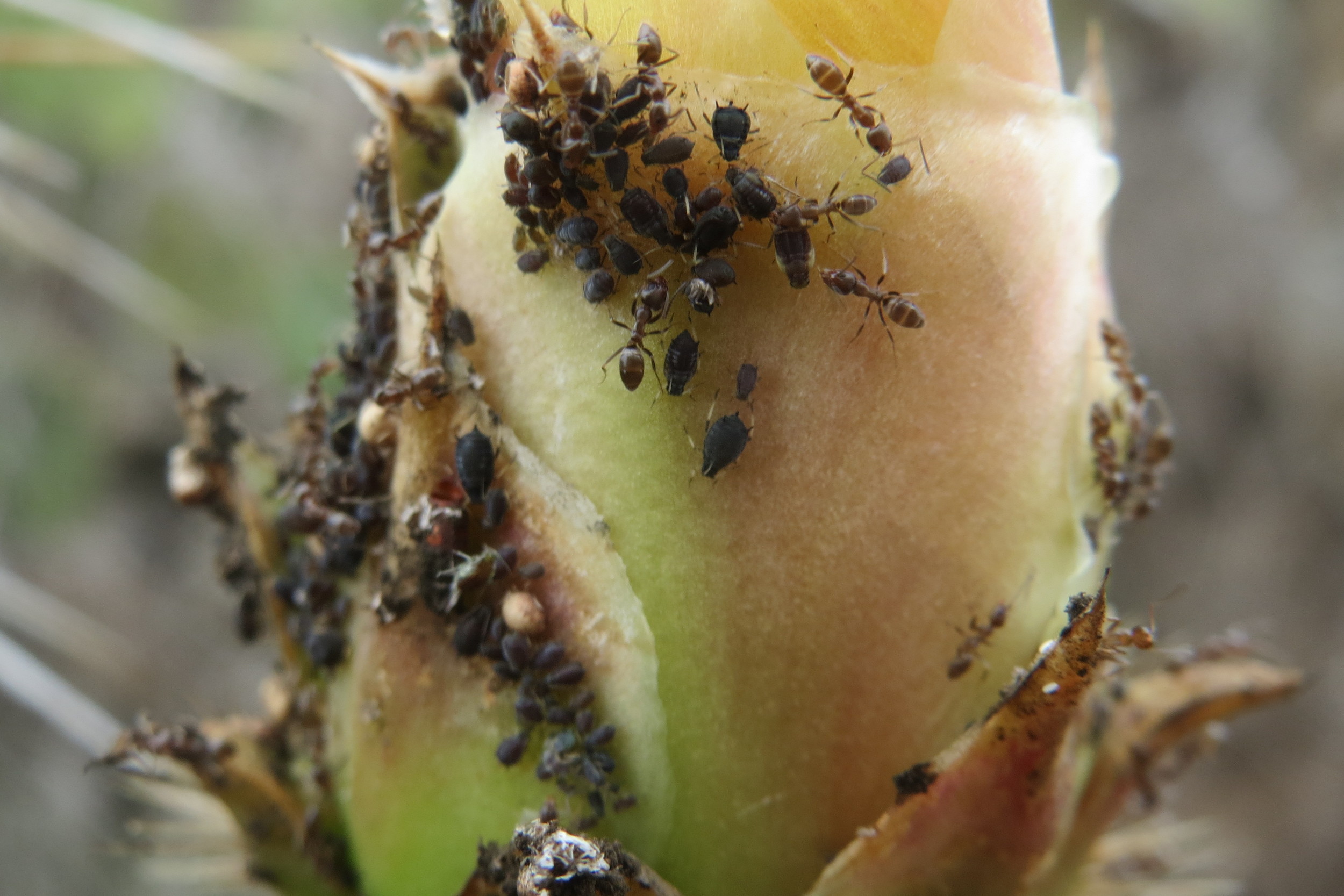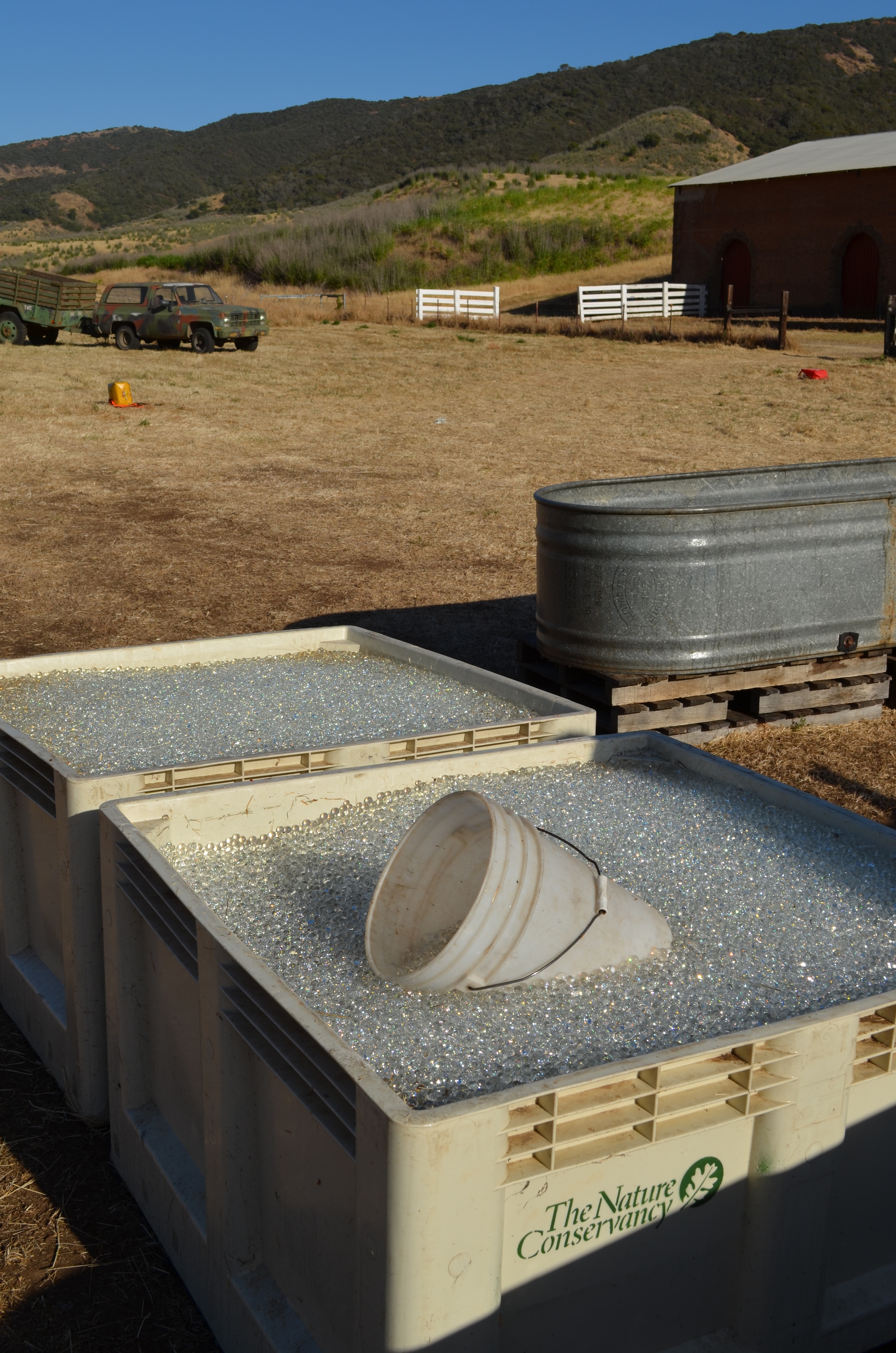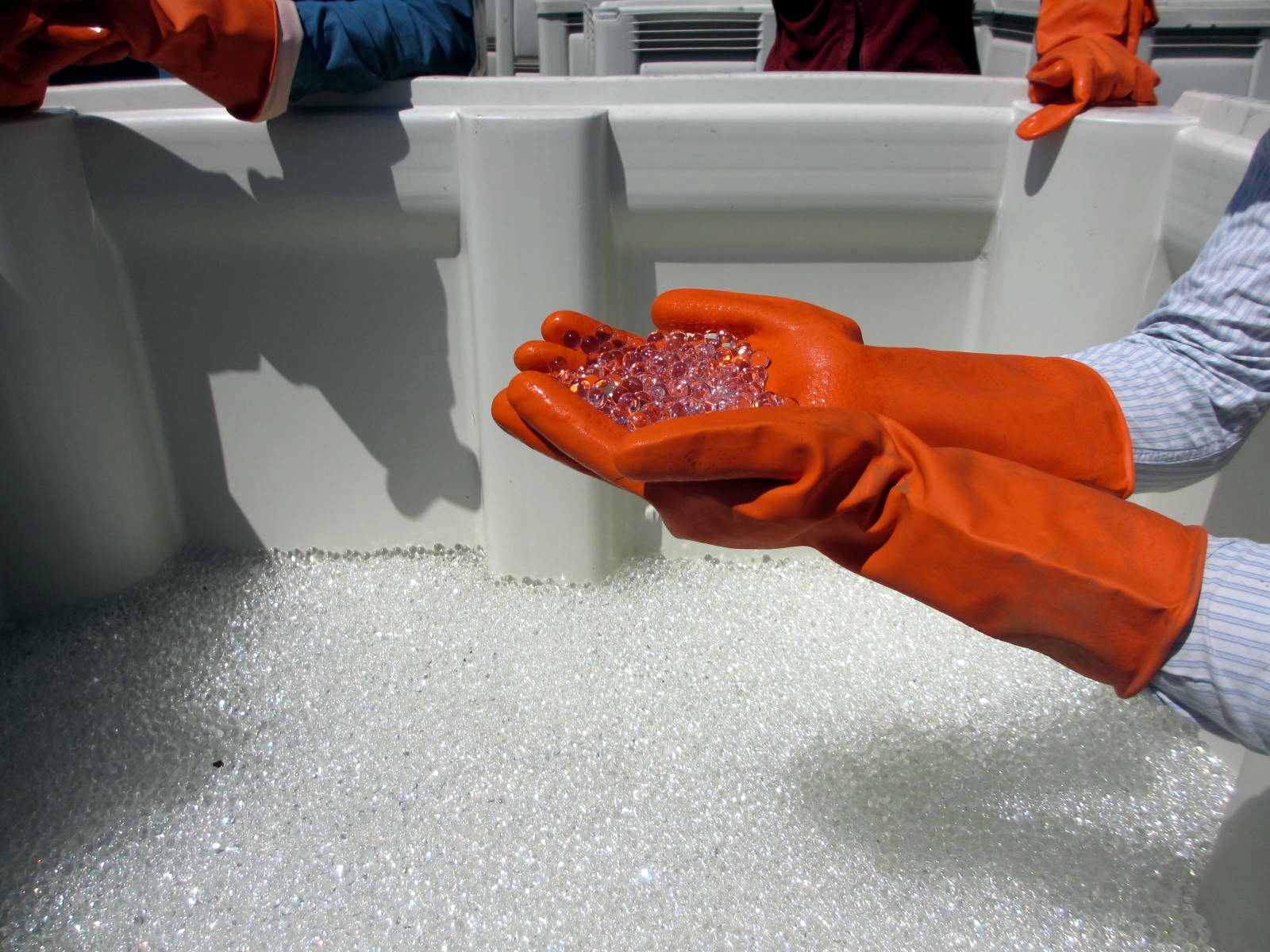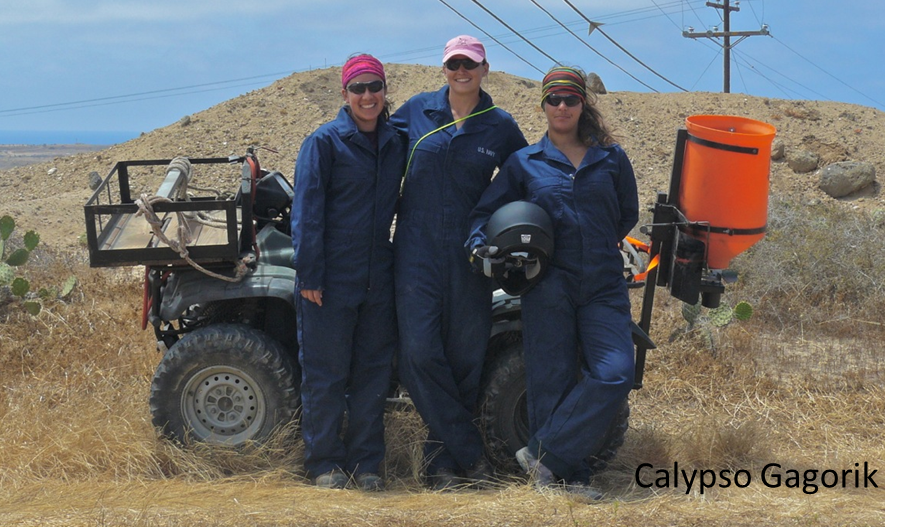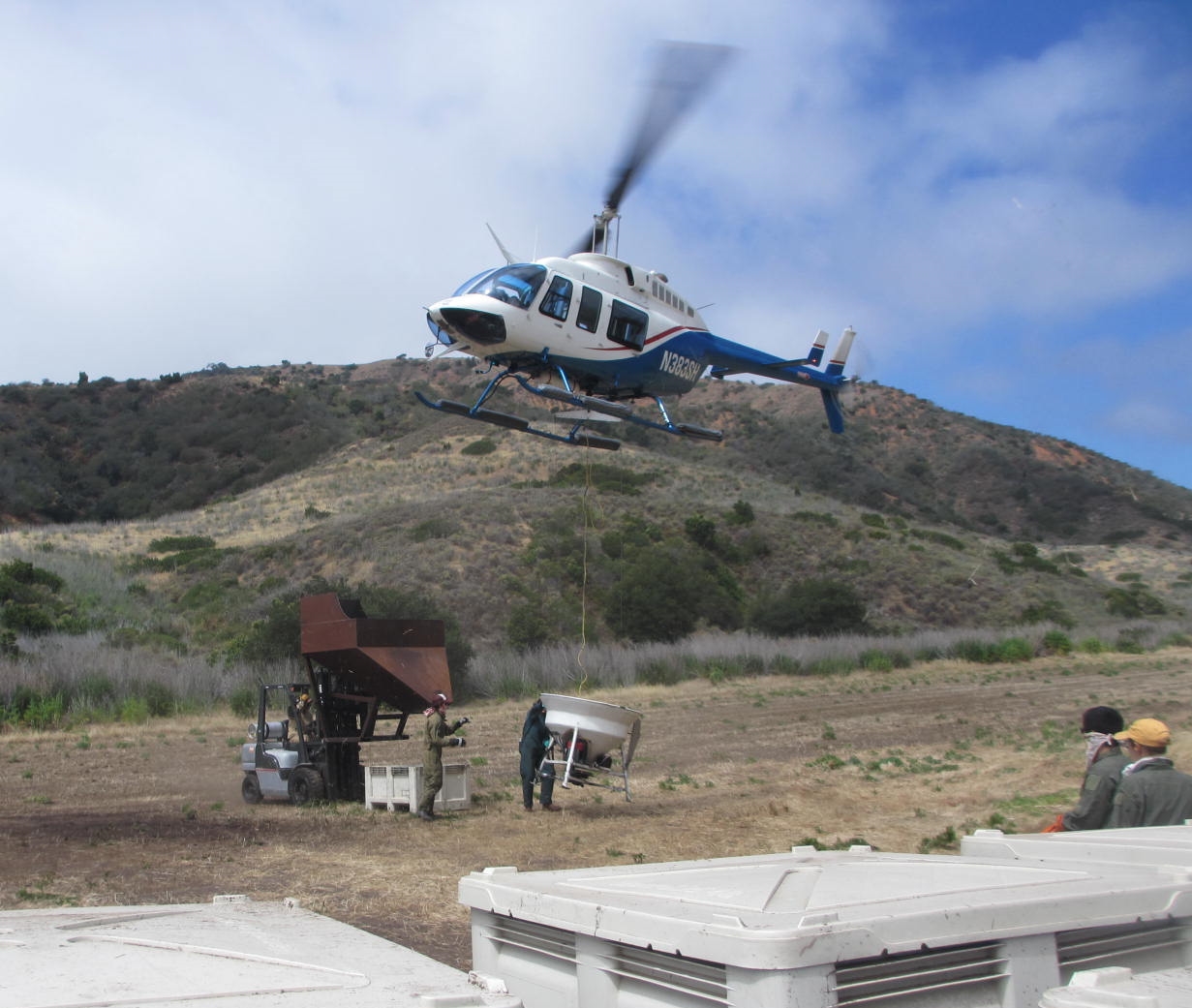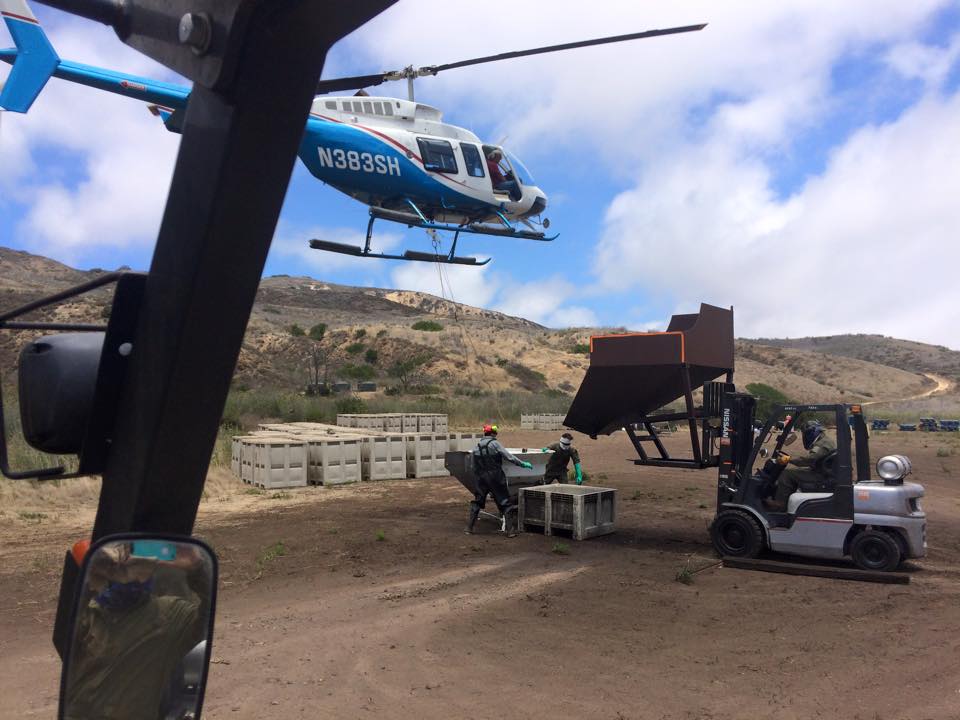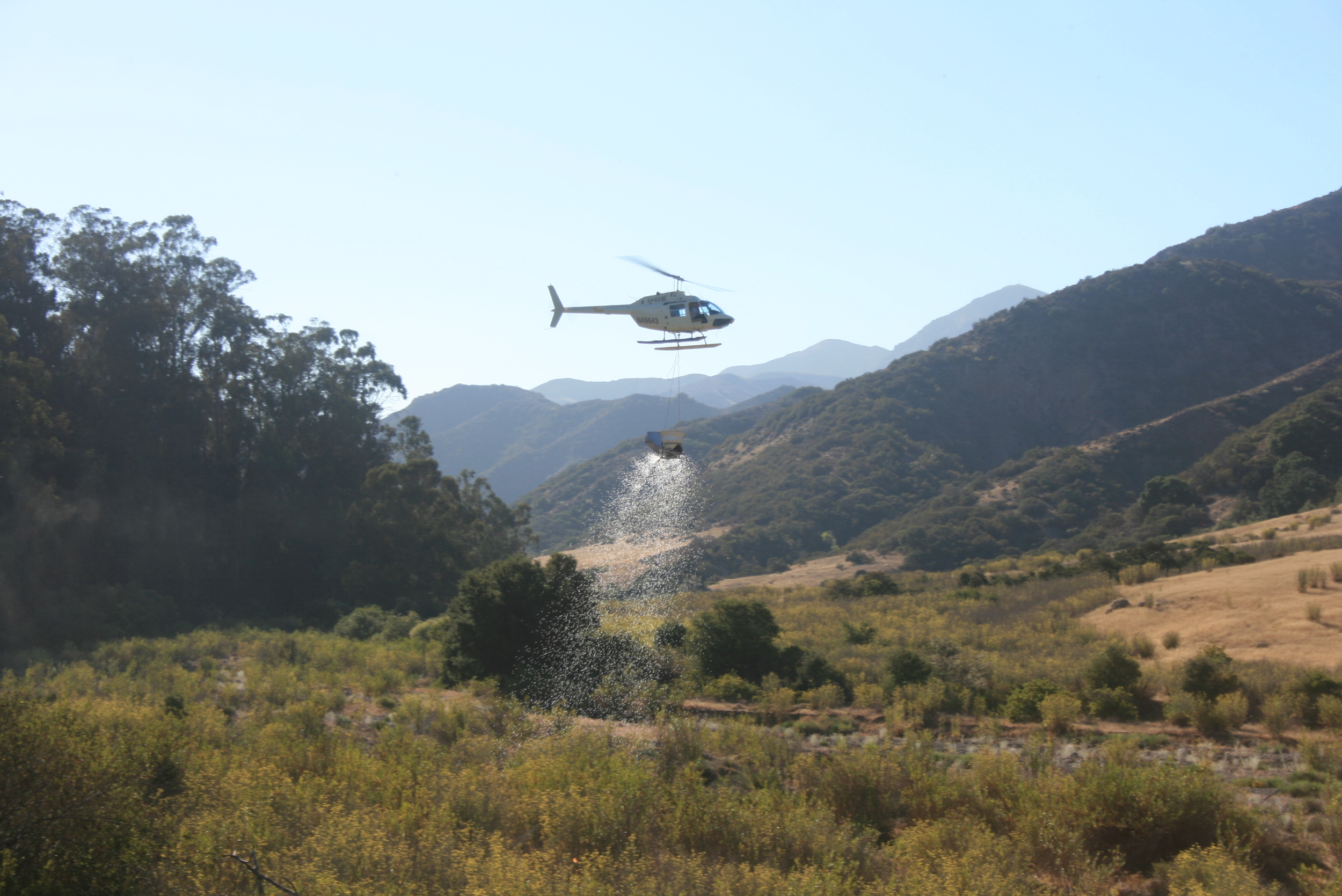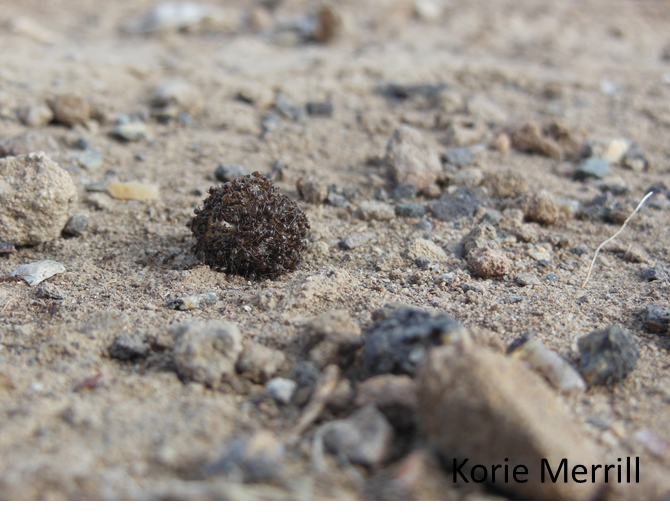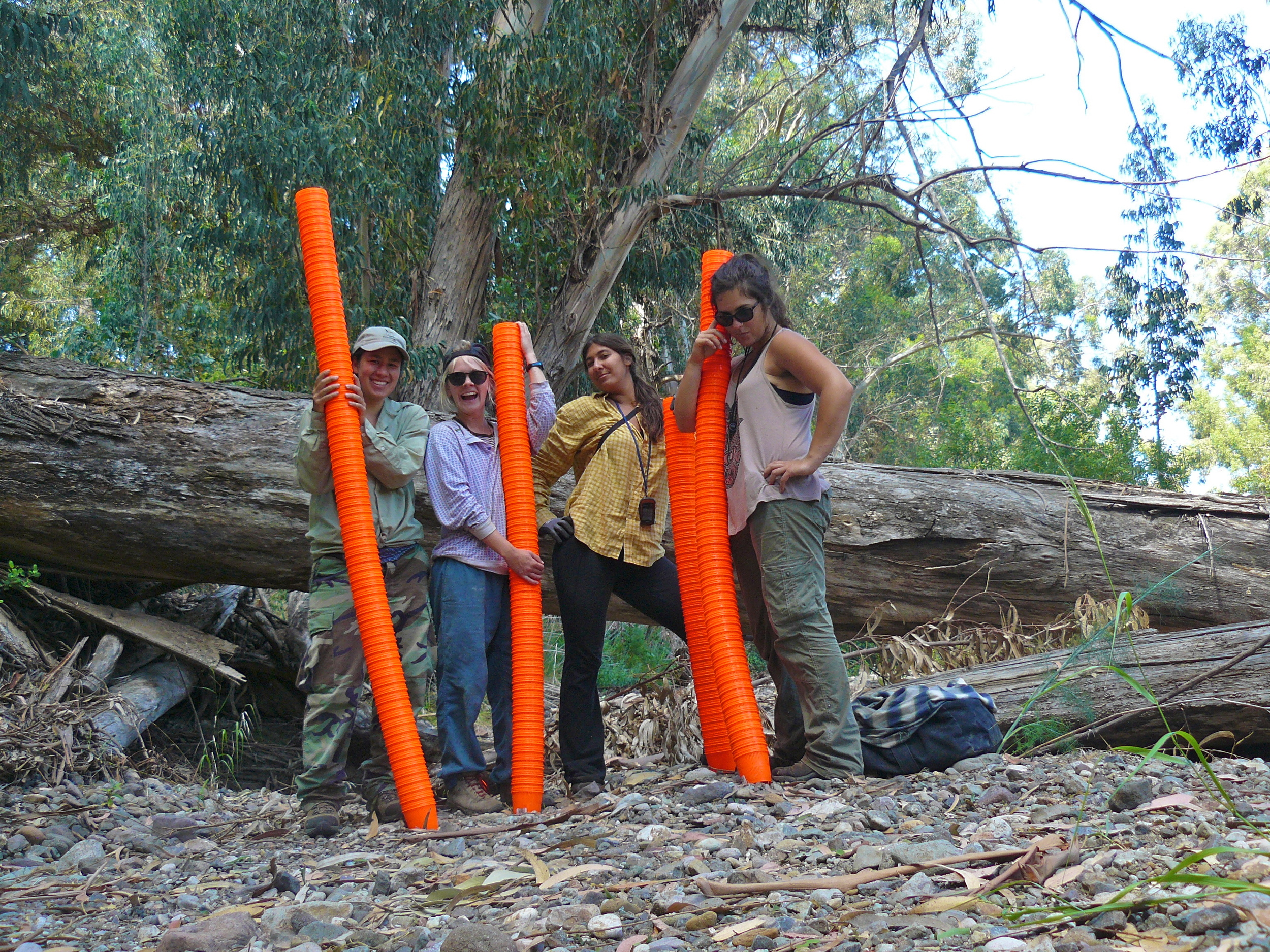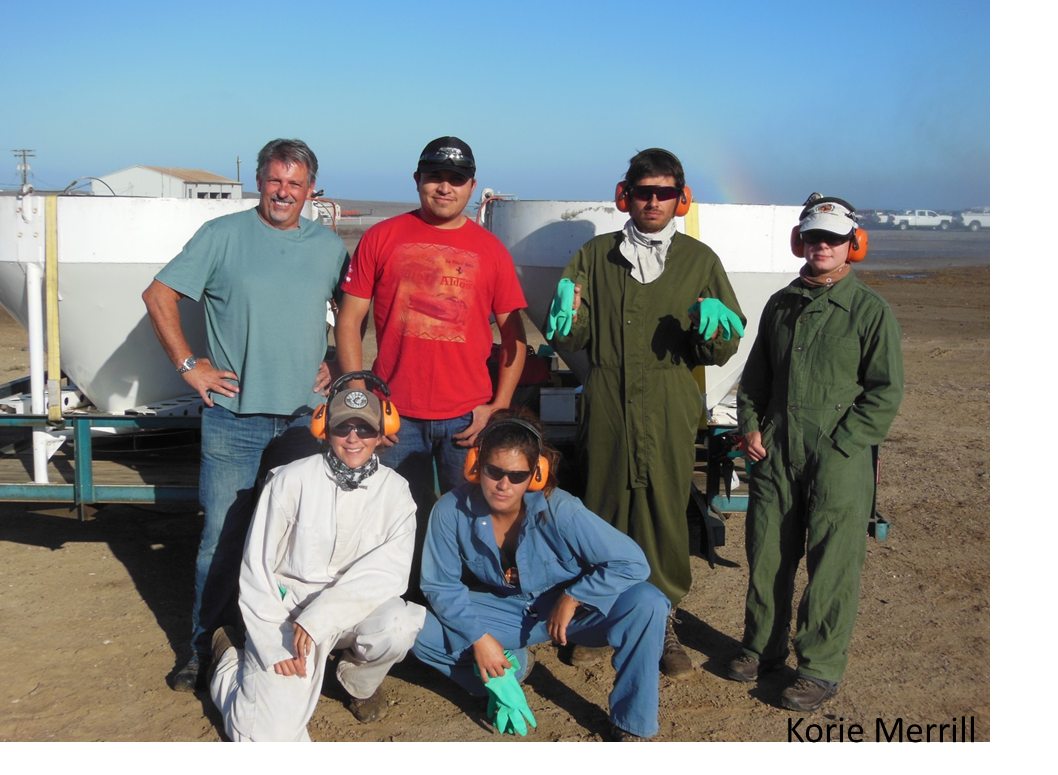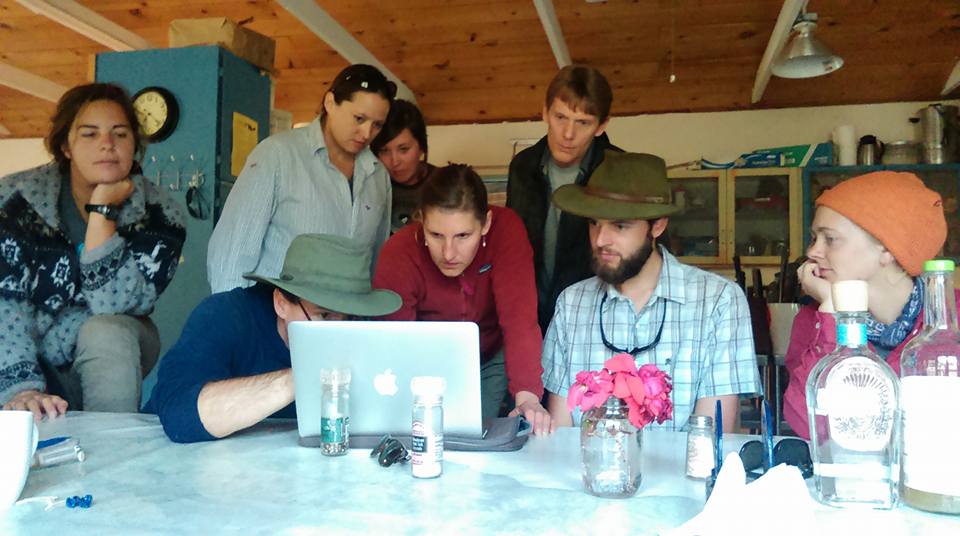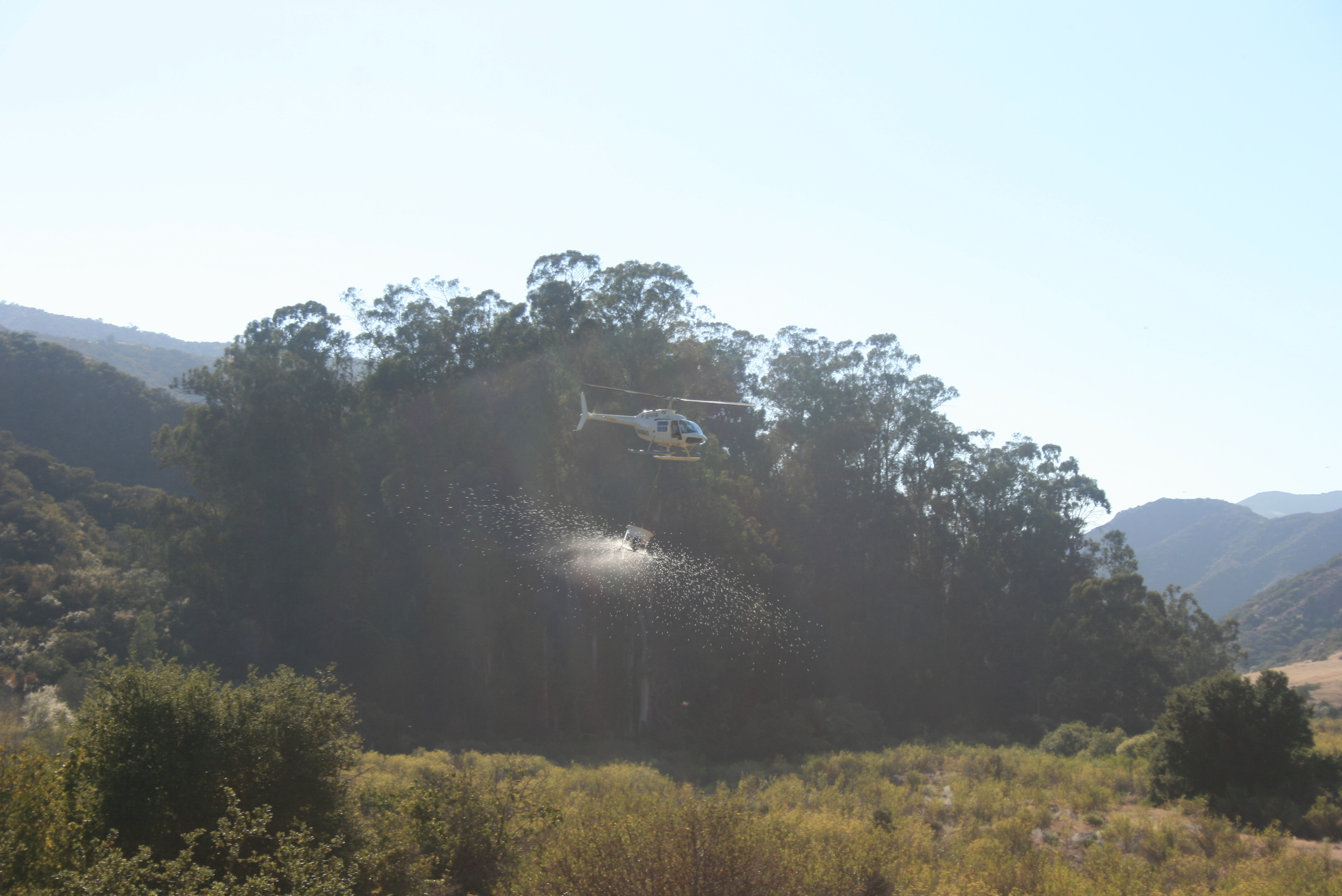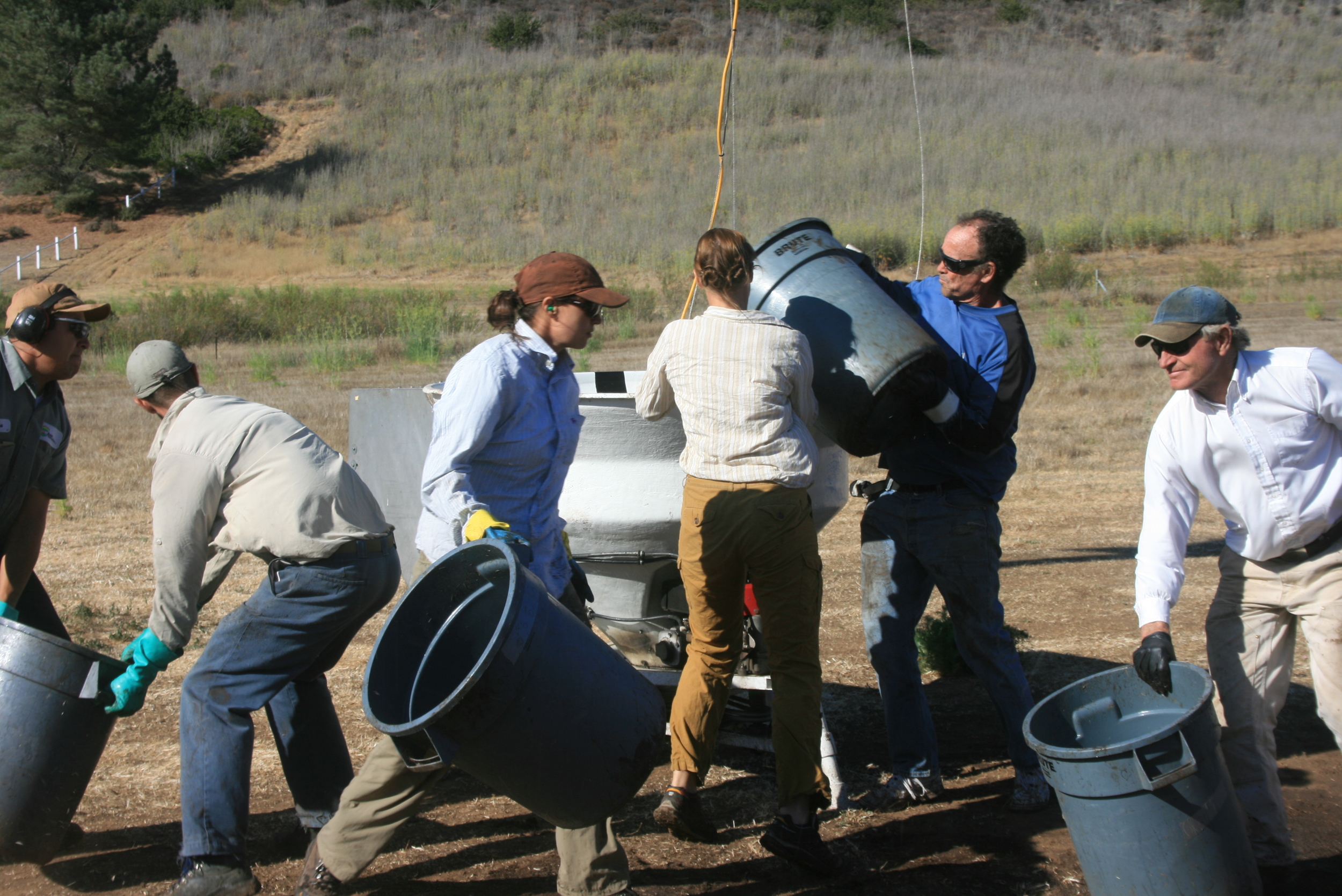ARGENTINE ANT ERADICATION PROGRAM
Argentine ants feed on the liquid bait on the surface of the bait ball.
Argentine ants are considered to be one the 100 worst alien invasive species on Earth. Over the past century, they have spread from their native range in South America to six continents and many islands around the world. In California, these ants have established super-colonies hundreds of miles long, stretching from San Diego to the Oregon border and beyond.
The ants are considered a major agricultural pest, and a nuisance when they invade homes. Where Argentine ants occur in conservation areas, most native ant species simply disappear, and that can have significant, cascading adverse ecological effects.
In the 1990s, researchers discovered that Argentine ants had established on Santa Cruz Island, the largest of the Channel Islands off the southern California coast. The island also harbors 33 species of native ants, the majority of which could be eliminated if the Argentine colonies were left unchecked. By 2010, the island had multiple documented infestations, totaling roughly 1000 acres, much of which in dense vegetation and difficult to access terrain.
Applying our science
One aspect of Argentine ant biology that makes them so hard to control is that infestations comprise an extensive network of colonies. The ants we see are the foraging workers, and most pesticides on the market target and quickly kill them. But unless and until the queens of the colony are killed (and each nest has a succession of queens in waiting), the infestation would be able to rebound with ever more workers.
Fortunately, those workers provided us the Achilles heel we needed: they’re job was to feed the queen.
What we needed was a way to get the workers to carry pesticide back to the queens. And that required innovation on a number of fronts.
First, we needed to formulate a bait that would be attractive to workers, and that had just the right concentration of toxicant in it so it wouldn’t harm the workers right away, and that wouldn’t raise alarm in the queen when she was being fed that there was something amiss.
Second, we need a way to get the bait distributed across the infested zones, so that it would be found by foraging workers from all of the individual colonies.
After much trial and error, our scientists – working in consultation with experts from around the world in ant biology and pest management – came upon the solution: a specially formulated low dose of toxicant, mixed with sugar and water, which we encapsulated into small polyacrylamide beads that we could readily distribute via helicopter over the infested areas.
Our manuscript describing our treatment and monitoring results can be found here.
It appears to have worked. But how can we be sure?
And after a series of applications, and careful follow up monitoring, our method appears to have worked. After just a couple years, we reached a point where we can no longer detect Argentine ants.
That lack of detection ushered in a whole new scientific question – and problem to solve. Does a lack of detection mean that they are actually gone, or only that they are at such low abundance they’re hard to find? If it’s the latter and we don’t detect and treat the residual colonies in time, we could easily lose all of the progress and investment to date.
But how to find such a tiny invader?
Our plan is to sniff them out. Working with expert dog handlers, we have trained dogs to detect Argentine ants, differentiating them from all the other ants they may encounter in the field. By running these conservation canines through the treatment areas, we will be able to increase our confidence that the ants have indeed been eradicated from the island.
If the project is determined to be successful, it introduces yet another scientific challenge: how do we reduce the risk of Argentine ants stowing away on a boat or a plane and reinvading the island? That requires robust “biosecurity” protocols, implemented on the mainland as well as the island, aimed at keeping ant, weeds, and other pests and pathogens from gaining a foothold on this highly sensitive and unique island conservation area.
More information on this project an be found at
THE PACIFIC INVASIVE ANT TOOLKIT
The Specifics: Treatment on Santa Cruz Island
In 2013 the Conservancy and the National Park Service used a helicopter to apply this bait to three infestations on Santa Cruz Island totaling 183 acres. The bait protocol is designed to achieve even, small-scale coverage to target every Argentine ant nest on the island while also achieving landscape-scale impacts with the use of a helicopter for deployment. After six months of intensive searching of the treatment areas, and checking over 55,000 baited lures, no Argentine ants were detected in those treatment areas. This result gave us confidence to continue the program and begin treatment of the last remaining infestation.
In June 2015, we began treating the Valley Anchorage infestation, the likely introduction point, and estimated to be 830 acres. This area will be treated twelve times in 2015 and additional four times in 2016, using the protocol described above. As of July 2015, our monitoring data indicate that Argentine ant activity has declined by over 99% in that area.
Over the next 10 years, in partnership with researchers at the University of California, San Diego, we will evaluate the success of the treatments and document restoration of the native communities.
Treatment on San Clemente Island
After the initial results of the Argentine ant eradication program on Santa Cruz Island the U.S. Navy implemented an Argentine ant eradication program on San Clemente Island. This program is being conducted for the United States Department of the Navy, under cooperative agreement with the Soil Ecology and Restoration Group (SERG) of the San Diego State University Research Foundation.
A helicopter and a hopper is used to deploy ant bait over hundred of infested acres on San Clemente and Santa Cruz Islands, California.
The Argentine ant is known to be present in at least eleven areas on SCI totaling 1025 acres. In 2014 five of these sites were treated using the baiting methods described above. Intensive monitoring of the treated sites will be implemented in 2016 after treatment of the remaining four infested sites.
As with many eradication efforts, initial control efforts need to be followed by extensive monitoring and control of remaining populations that might have survived the initial treatments. Accurate detection of the few remaining nests is often challenging, and the small surviving populations often result in the failure of the eradication program. It is these few small remnants nests that are the most difficult to eradicate because small numbers of individuals are difficult to find. To increase the likelihood of locating remnant Argentine ant nests part of the SCI program focused on non-toxic bait preference for low-density monitoring. The information obtained from these studies will be used in combination with a detection probability assessment to standardize Argentine ant detection protocols and future prevention plans in a diversity of ecosystems.
We believe that with persistence, we will successfully eradicate Argentine ants from Santa Cruz and San Clemente Islands and provide a useful protocol for other islands and industries battling this pest.
ProjeCT Funding
The Nature Conservancy
The U.S. Navy
The California Wildlife Conservation Board
The National Park Service
The California State Coastal Commission
Christina Boser is a California Islands Ecologist with The Nature Conservancy. She is the program lead for the Argentine ant eradication project on Santa Cruz Island and consults on Argentine ant removal projects in California, and beyond.
Ida Naughton is a graduate student at UC San Diego and leads the Santa Cruz Island ant crew. Ida's research focuses on the assembly patterns of native Santa Cruz Island ant communities, and the evolutionary diversification of Carpenter ants (Camponotus) across the California Channel Islands. She has been involved in the ant project on Santa Cruz since 2011.
Korie C. Merrill (center) was the Argentine Ant Eradication Project Manager for the Soil Ecology and Restoration Group 2012-2016. Korie received her Master’s of Science degree in Entomology from UC Riverside on this project. Her primary focus is native habitat restoration through projects such as research on invasive ant ecology and eradication across California’s Channel Islands, San Clemente Island native plant habitat restoration, invasive plant management and rare plant surveys.
Amanda Chisholm (right) was the Argentine Ant Eradication Crew Lead for the Soil Ecology and Restoration Group. Amanda is a graduate from UC San Diego with a BS in Environmental Systems: Ecology, Behavior, and Evolution. She has worked on San Clemente Island since May 2014, working on the Argentine ant abatement project and habitat restoration project.
Calypso Gagorik is a graduate of Montana State University with a B.S. in Biological Sciences and a minor in Entomology. She has worked on the Argentine Ant Eradication Project on Santa Cruz and San Clemente Island.
Preston Duncan, Vicotr Zhang, Ida Naughton and Christie Boser, preping for treatment on Santa Cruz Island, 2015.




